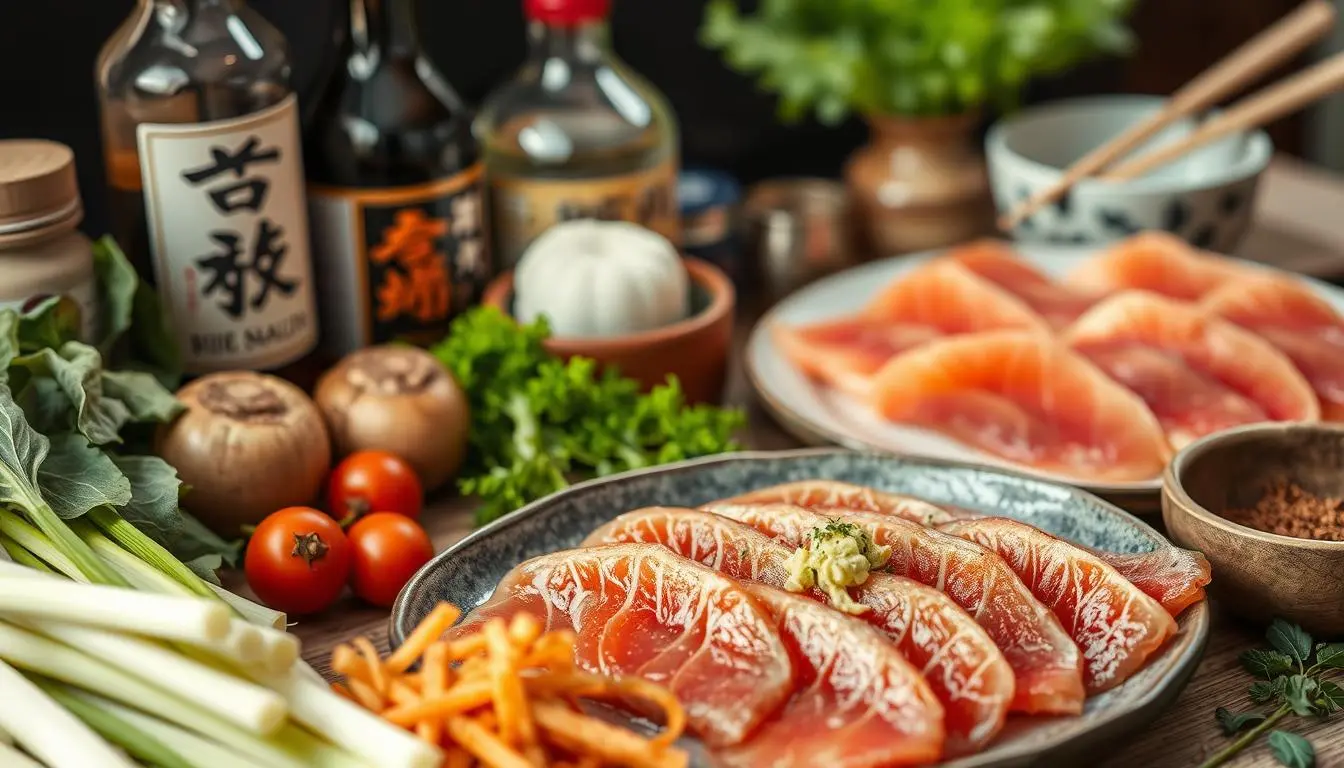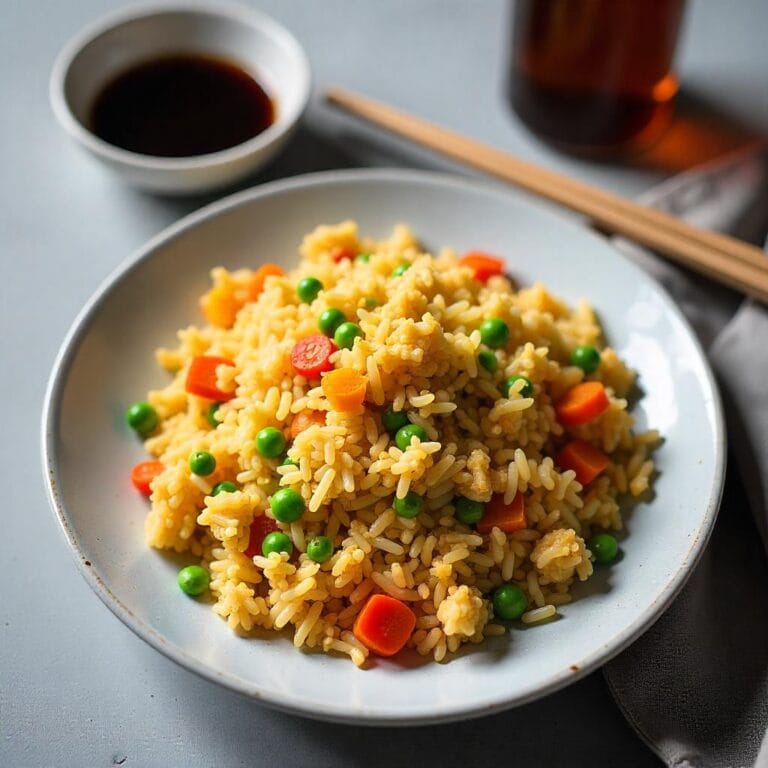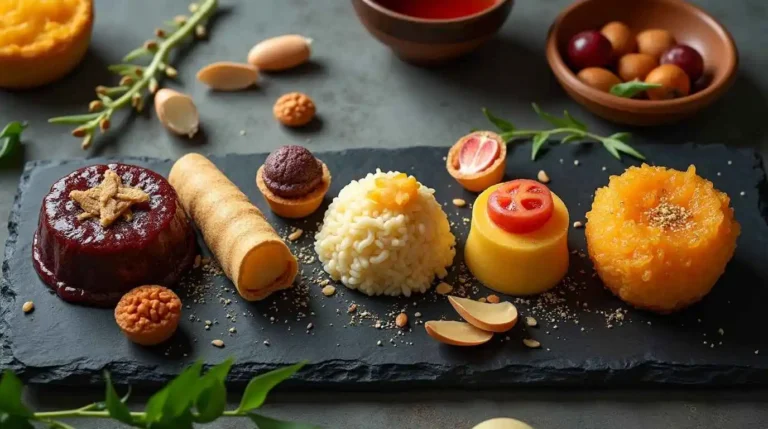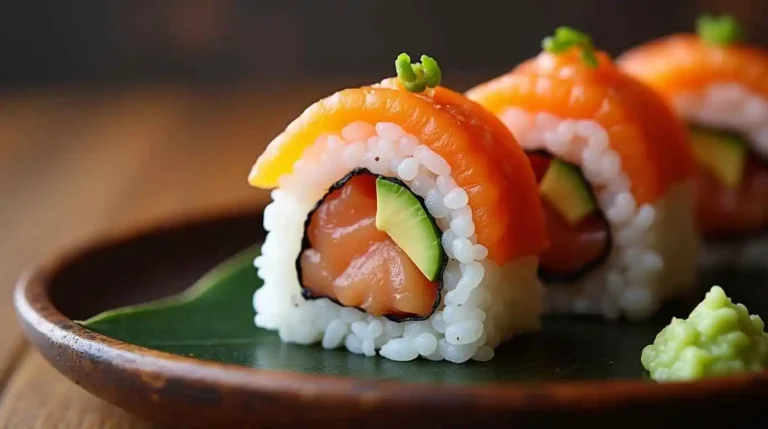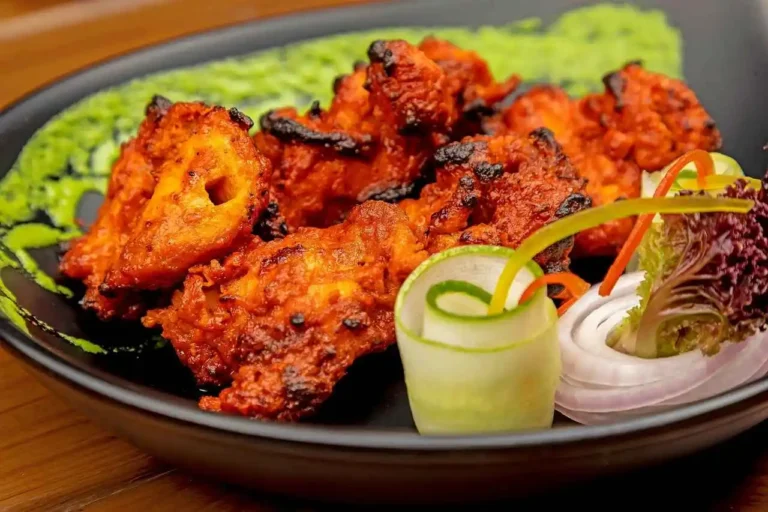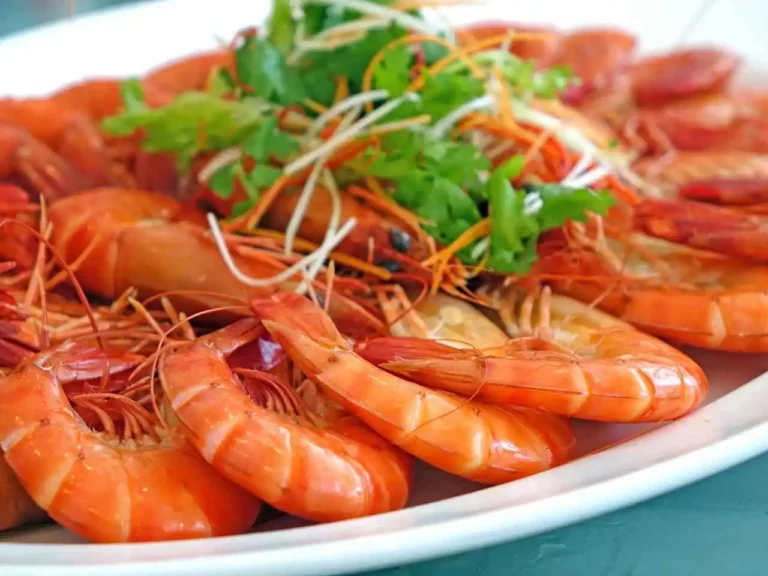Delicious Sakura Japanese Cuisine: Ultimate Flavor Guide
Embark on a culinary adventure with Sakura Japanese Cuisine and discover the world of Japanese cuisine. It is more than food; it is experiencing Japan’s diverse and rich culture.
At Sakura, we preserve the true nature of Japanese cuisine. We prepare food using traditional recipes and cooking methods, which gives every meal an accurate portrayal of Japan’s food traditions.
Table of Contents
Key Takeaways:
- Experience local flavors and sample authentic Japanese food.
- Understand food and its cultural nature in Japan.
- Enjoy food cooked on a traditional stovetop.
- Enjoy the rich tradition of Japan through each of the dishes.
- Embark on an unforgettable culinary adventure.
The Beauty of Cherry Blossom Cuisine
Like Sakura’s nature, Japanese food combines flavors, textures, and simplicity, which characterizes it all. The technique makes each meal stand out and unique.
The Philosophy Behind Cuisine in Japan
Japanese food is centered on cooking food at its freshest point. This is called “shun,” or seasonality. It enhances food and connects humans with nature.
Seasonal Ingredients and Their Application
Seasonal foods play a crucial role in Japanese cuisine. The menu and cooking methods change for each season throughout the year. Restaurants like Azuma Japanese Cuisine and Ginza Japanese Cuisine demonstrate seasonal food diversity.
Traditional Japanese Dining Etiquette
Knowing Japanese dining etiquette is essential for enjoying Sakura Japanese Cuisine. It includes using chopsticks correctly and appreciating the chef’s skill.
Simple Japanese Cooking Utensils
Japanese cooking techniques and samurai cuisine begin with the proper use of kitchen equipment. To cook authentic dishes, you need special equipment.
Top Knives for Japanese Cuisine
Japanese blades, with their razor-sharpness and accuracy, are all that they ever concern themselves with. Start with a Gyuto (all-purpose blade) and a Nakiri (veggie blade). These blades are essential for delicately chopping ingredients in traditional Japanese cuisine, such as fukui sashimi.
Safety Precautions While Handling Japanese Knives
Be cautious and handle Japanese knives with care. Always cut in a direction away from yourself and keep your fingers away from yourself to avoid accidents. Sharpen them regularly to keep them sharp as well.
Specialised Cookware for Authentic Results
Japanese cuisine utilizes specialized cookware, ranging from nabe (a traditional Japanese pot) to hanging wire pans. These pots are used to hold a wide variety of dishes in Japanese cuisine, ranging from hot pots to delicate sauces.
Construction of Your Japanese Kitchen Area
A well-designed kitchen for preparing Japanese food is more than just an assortment of the correct equipment. Consider the layout and flow to achieve optimal efficiency. An organized kitchen is more enjoyable and yields genuine dishes.
Basic Ingredients in Japanese Cuisine
Learning about food in Japanese cuisine starts with understanding its primary ingredients. The authentic taste of Japanese food is in its uncomplicated, fine ingredients.
The Five Pillars of Flavour
Sugar, salt, vinegar, soy sauce, and miso are the fundamental building blocks of flavor in Japanese cuisine. These underlie most dishes and combine sweet, salty, sour, and umami flavors.
They play a crucial role in achieving rich flavors in all food dishes. Mastery of their utilization is highly critical for obtaining authentic taste.
Fresh Produce Choice
Seasonal produce is a mainstay in Japanese cuisine. Purchase seasonally available produce because it is fresher and tastier. Purchase vegetables, including daikon and lotus root, as well as fruits such as Japanese persimmons and yuzu.
Where Can I Find Authentic Japanese Ingredients?
Authentic Japanese ingredients can be found at Japanese stores or online. When making your purchase, look for “Made in Japan” products. Opt for ingredients commonly found in Japanese cuisine.
Substitution for Unavailable Items
Certain Japanese ingredients may be hard to source outside Japan. For example, if you don’t have Japanese vinegar handy, mix apple cider vinegar with a bit of sugar. Sugar and sake are also alternatives if mirin is unavailable.
Learning and utilizing simple ingredients allows you to cook Japanese food at home, even far from Japan.
Learning Basic Cooking Techniques in Japan
Japanese food is particular but straightforward. Understanding and learning those principles is required to prepare traditional dishes.
Proper Rice Preparation Methods
Cooking rice is a particular art. Japanese rice is glutinous and stickier than regular rice. Wash it thoroughly and use the proper water ratio to cook it properly.
The water-to-rice ratio is typically 1:1 or 1:1.2, depending on the variety and personal preference. Using a rice cooker is simple if you have one, but stovetop and pot cooking are just as good as long as you read the directions.
Fish Cutting and Cutting-Ready Procedures
Precise cutting is a prerequisite for preparing fish for sashimi and Sushi. The nature and style of cutting vary according to fish and menu items. For example, fish for sashimi is sliced against its grain in skinny slices to maximize texture and flavor.
Please keep it clean and sharp, and hold it so that it is dry to obtain clean cuts. Cut different species of fish to master the act.
Basic Dashi and Stock Making
Dashi is a staple ingredient in Japanese food. It is used in many dishes and even as an ingredient in miso soup. You need katsuobushi (dried bonito flakes) to make dashi. Soak the kombu in water, then cook and strain it. Add the katsuobushi to make dashi and let it steep over low heat.
Strain and store as is. Dashi is usable for a few days in the fridge and freezes well for later use.
Common Mistakes to Avoid in Japanese Cooking
Using low-quality ingredients is a frequent mistake that can be detrimental to both taste and accuracy. Another mistake is neglecting to prepare ingredients properly, such as failing to rinse rice and chopping fish inappropriately.
Japanese cuisine is particular about the quality of its ingredients. Its final result is heavily dependent upon real, fresh ingredients.
Not using traditional methods and substituting ingredients without understanding their specific purpose also yields poor results.
Preparing Signature Sakura Japanese Cuisine Dishes
Cooking at Sakura Japanese Cuisine is all about balance and freshness. For that reason, flavors must be balanced and combined with fresh ingredients. Learning various cooking techniques and how to mix ingredients is also required.
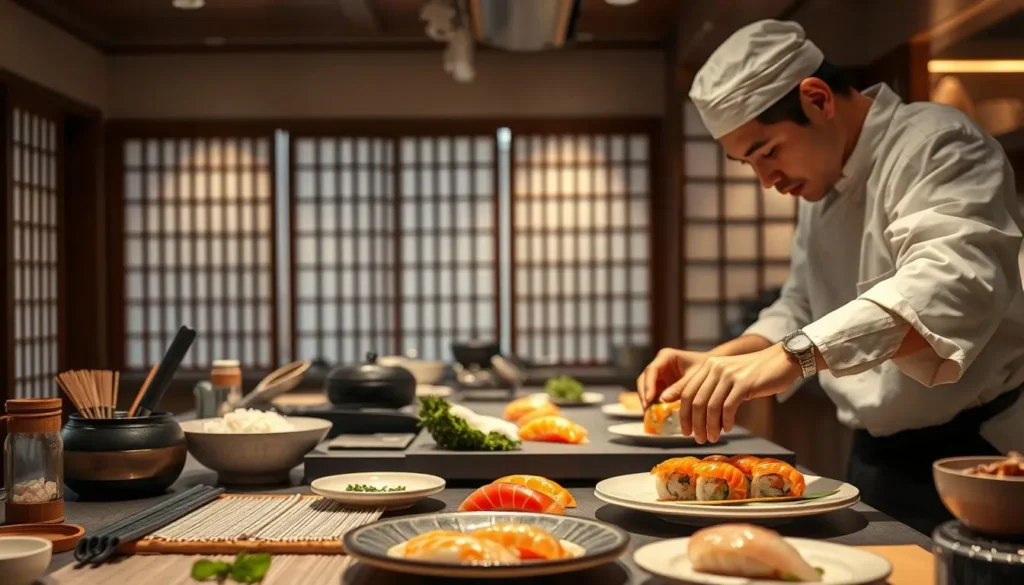
Among Japan’s classes, Sushi is a type of food made with premium short-grain Japanese rice. Good-quality rice is crucial in attaining the taste and texture of Sushi.
Step-by-SushiInstructions for Sushi
Here is how to prepare Sushi:
- Begin pressing traditional sushi rice.
- Use fresh, sashimi-grade fish and other ingredients.
- Arrange the Sushi together Sushi-strictly.
A Sushi taste is about how it looks and provides an experience.
The best Sushi features delicacy and meticulous fish cutting.
Cooking Methods to Achieve Flawless Tempura
Tempura is just one of Japan’s numerous popular dishes that requires finesse to achieve its perfect crunchiness. The trick lies in its batter and its method of cooking.
| Tempura Ingredient | Purpose |
| Flour | Provides structure to the batter |
| Ice-cold water | Helps in creating a light, crispy batter |
| Vegetables or seafood | The main ingredient to be fried |
To achieve perfectly crisp results, maintain the oil at its optimal level. Never deep fry too many at one time.
Cooking Ramen from Scratch
Ramen is a typical Japanese noodle soup. It consists of a deep broth with a springy-type optional added topping. Ramen involves making broth, preparing noodles, and selecting toppings.
Scathe desired ling Down Recipes from Fuji Sushi Japanese Restaurant.
Fuji Sushi JaCuisi offers a variety of custom dishes. By combining different cooking styles, you can create your unique dishes.
Learning all those skills and being familiar with Sakura Japanese Cuisine enables you to prepare authentic and delicious Japanese dishes that are bound to impress everyone.
Regional Food Differences in Japan
Regional variations exist in Japanese cuisine, demonstrating its remarkable diversity. These regional variations result from local ingredients, customs, and historical contexts. Examining various regions gives one distinct flavor and cooking process.
The Main Differences Between Azuma and Ginza Cuisines
Azuma and Ginza represent two distinct styles of dishes with a distinctly Japanese touch. While Azuma is popular for its uncomplicated dishes prepared with fresh seafood and mountain greens, Ginza is renowned for its chic dishes, which often find their way into high-class restaurants.
Samurai Cuisine in Japan: Historical Importance
Samurai Japanese cuisine is rooted in a strong history and originated in the diet of the samurai class. The cuisine is centered on simplicity, utilizing local ingredients such as rice, miso, and vegetables. Samurai cuisine is characterized by dishes developed using local ingredients.
How Do Regional Crops Characterize Regional Cuisine?
Regional ingredients play a significant role in defining Japanese cuisine. The coastal region is renowned for its special Sushi, thanks to the abundant seafood available in these areas. The mountainous region serves up strong dishes featuring local foods and cereals.
Conclusion: Your Culinary Adventure through Japanese Cuisine
You will gain a deeper understanding of authentic Japanese cuisine as you complete studying Sakura Japanese Cuisine. You’ve learned some easy cooking skills and how to prepare dishes that taste like those found in Fuji Sushi’s Japanese cuisine. Your culinary adventure is about to start, with many Japanese cooking traditions waiting to be explored.
You now stand ready to explore Japanese cuisine, experiment with more dishes, and hone your skills. Whether a simple meal or an elaborate sushi roll, you’ll be prepared to make outstanding Japanese dishes based on what you’ve learned.
Begin this food expedition with confidence. Let Japan’s cuisine and customs lead you on the way. The more you follow along, the more you’ll realize how and why food from Japan is so popular worldwide.
Often, Japchae is a one-of-a-kind dish. Sakura Japanese Cuisine is dedicated to serving authentic Japanese cuisine. Traditional in nature, taste, and ingredients, it excels through its meticulous attention to detail, seasonality in food ingredient use, and sheer elegance in looks.
Frequently Asked Questions
What is a significant ingredient in Japanese food?
Japanese cuisine is founded upon five basic seasonings: soy sauce, sake, mirin, sugar, and salt. Fresh vegetables, dashi (special broth), rice, and noodles are also essential.
How do I obtain authentic Japanese ingredients?
You can find real Japanese ingredients at Asian markets, specialty food stores, or online. Soy sauce and rice are readily available, but special miso or wasabi may require a trip to a specialty store.
Where is the difference between Azuma and Ginza Japanese Cuisine?
Azuma and Ginza cuisine originated in distinct regions of Japan. Azuma is more rural and features heavier cuisine, while Ginza is more refined. The most obvious difference is the local ingredients utilized, cooking method, and past.
How do I prepare traditional Japanese Sushi, such as the Sushi served at Fuji Sushi Cuisine?
Start with the basics: Sushi pairing Sushand Fuguiui. Learn how to work with sushi rice, cook fish, and roll sushi. Fresh ingredients result in an authentic taste.
What is Samurai Japanese Cuisine?
Samurai food refers to the cuisine of the samurai class in Japan. Plain and homely food made with native ingredients is all about it. Symbolizing simplicity and restraint in the case of the samurai.
Can you use substitute ingredients in Japanese cuisine?
You can substitute ingredients in Japanese cuisine, but do so according to your desired taste and texture. For instance, if you do not have matsutake, substitute regular mushrooms.
Tried This Recipe? Tell Us What You Think!
There are no reviews yet. Be the first one to write one.

